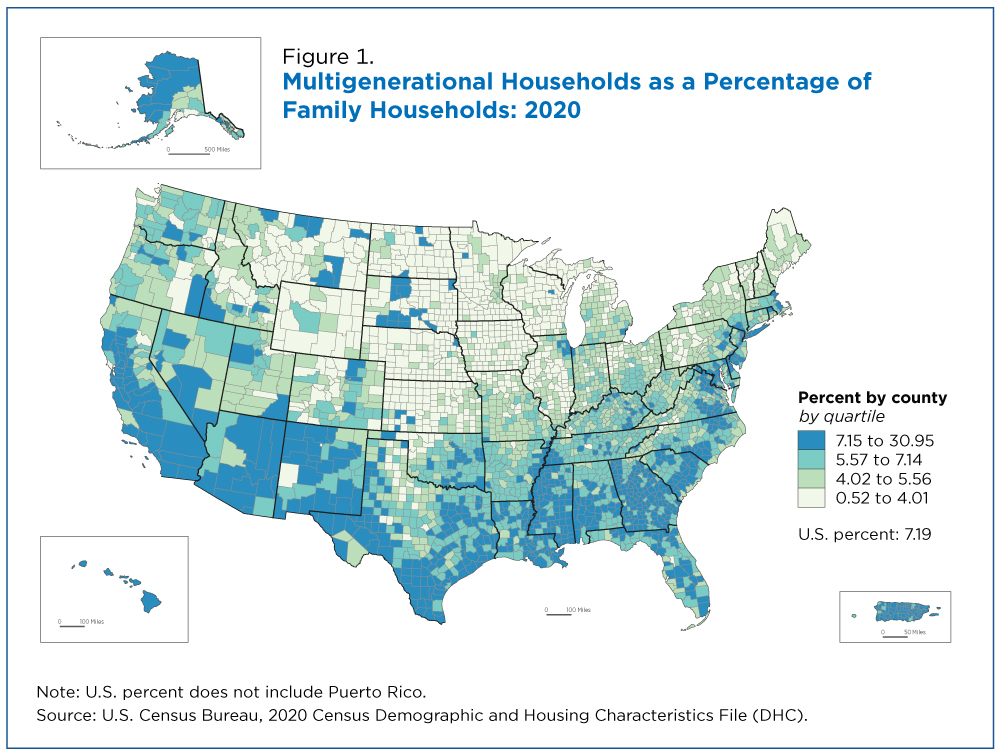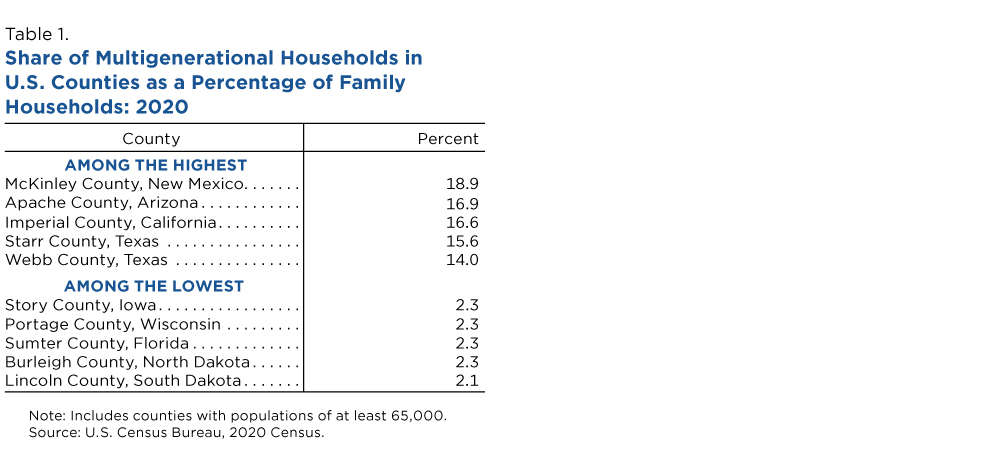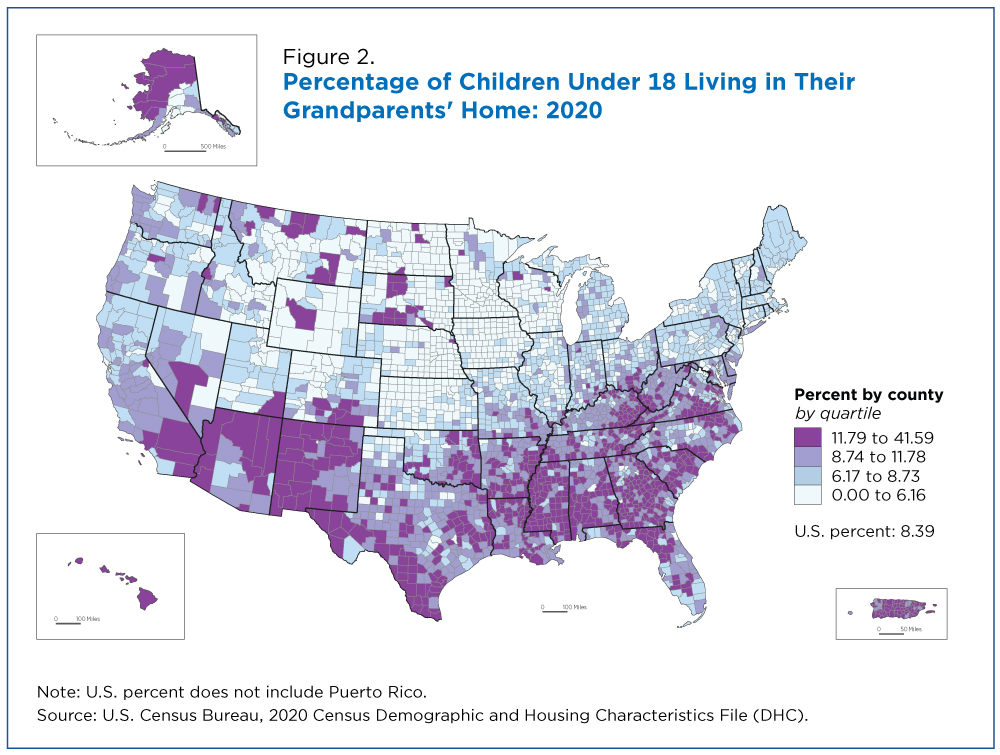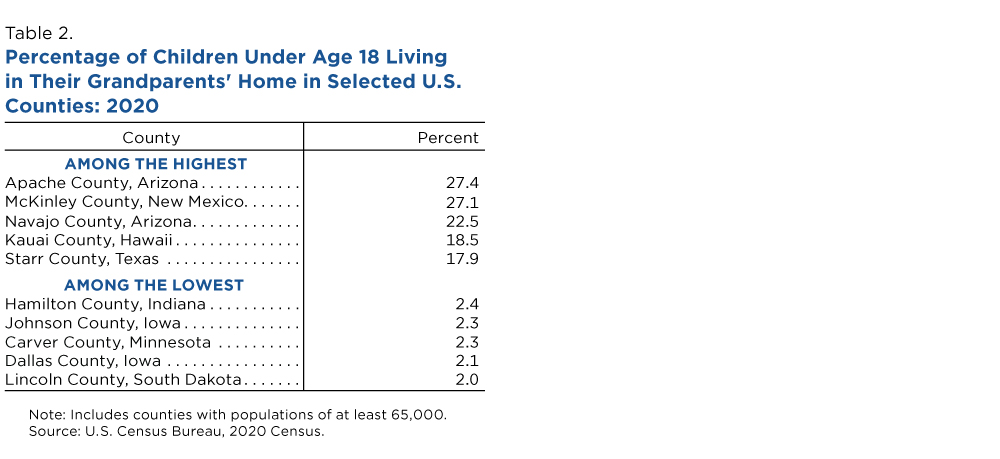
UNITED STATES – Multigenerational households — three or more generations under one roof — made up 4.7% of all U.S. households but 7.2% of family households in 2020, an increase from 2010.
Family households are those with at least one person related to the householder by birth, marriage, or adoption.

There were 6.0 million U.S. multigenerational households in 2020, up from 5.1 million in 2010, according to 2020 Census data released recently.
Indiana has more than 2.6 million households.
• 716,930 of Indiana’s households include children younger than 18 (27.5%).78
• Most Indiana’s children live in households with a biological parent (82.0%) followed by a grandparent as the householder (7.1%), stepparent (4.4%), foster parent (2.4%), adopted parents (2.4%), or other relative (1.6%)
A small portion (2.8%) of Indiana’s households is multigenerational, meaning at least three generations of family members are part of the same household. Not all Indiana children who live with their grandparents live in multigenerational families, because the parent of the child is not always present, leaving custodial responsibility to the grandparent.
- In 2020, 122,053 grandparents live with their grandchildren who are younger than age 18 in Indiana, a 0.5% decrease from 2019 (122,670).
- Of those children living with their grandparents, 43.8% of grandparents are directly responsible for the child, which increased by 2.5 percentage points from 2019 (41.3%).92
Kinship care involves a relative or someone with a significant emotional connection to a child, such as a grandparent, providing care when parents are not able to raise their child. Kinship care reduces trauma, helps children maintain family bonds, and increases a sense of belonging. Although grandparents often are willing to care for the children in their families, they may face additional emotional and financial challenges. Because many grandparents are not licensed in the foster care system, they may not be eligible for the same services and financial support as licensed foster parents.
- Of grandparents who are responsible for their grandchildren, 40.8% (21,855) are older than age 60.95
- 40.7% of children living with their grandparents are under the age of 6.
- In households where the grandparent is responsible for the grandchild, 43.3% receive Supplemental Social Security
- Income (SSI), cash public assistance income, or Food Stamps/SNAP benefits.
- 22.4% of children whose grandparents are responsible for them live in poverty

Multigenerational households were not equally distributed across the nation and the map below (Figure 1) shows the percentage of all family households that were multigenerational in 2020 by county.
While 2020 Census data show that 7.2% of all family households were multigenerational nationwide, county-level percentages are wide-ranging, from 0.5% to 31.0%.
Multigenerational households were more prevalent throughout the South, Puerto Rico, and some Western states. This is consistent with 2010 data that also showed a higher percentage of multigenerational households throughout the South and West.
In 2020, many counties in Alaska, California, Hawaii, Nevada, Oregon, and Washington, for example, had a high percentage of multigenerational households (Table 1). However, other states in the West like Idaho, Montana, and Wyoming, had many counties with a lower prevalence of multigenerational households. These households were also less common in the Midwest and Northeast.
Children Living With Grandparents
In 2020, 6.1 million or 8.4% of children under age 18 lived in their grandparents’ homes (Figure 2), up from 5.8 million in 2010.
Counties in Puerto Rico and throughout states in the South and West tended to have a greater share of children living in their grandparents’ homes while counties in the Midwest – particularly in Iowa, Kansas, Minnesota, and Wisconsin – had a smaller share.
The five counties with the greatest shares of children living with their grandparents were predominantly in the West, and those with the smallest shares were all in the Midwest.
Information: Chanell Washington, Thomas Gryn, Lydia Anderson, and Rose M. Kreider are family demographers in the Fertility and Family Statistics Branch of the Social, Economic, and Housing Statistics Division of the United States Census Bureau.







